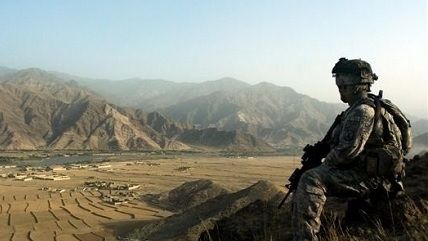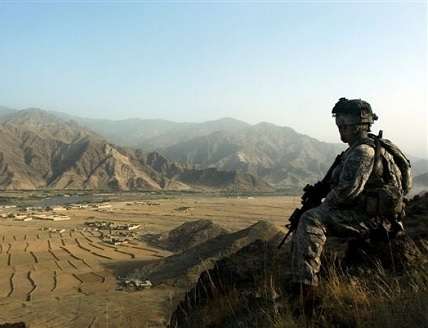U.S. Special Ops Soldier First 2016 Casualty of War in Afghanistan That Ended in 2014
Killed in a firefight in Marja, the site of the first operations of the 2010 U.S. "surge"


A special operations servicemember became the first U.S. casualty in the war on Afghanistan, the Defense Department confirmed without releasing a name. President Obama declared an end to the war in Afghanistan in 2014, but 10,000 U.S. troops remain, with special operators involved in "train, advise, and assist" missions. A Defense spokesperson resisted characterizations of the firefight, reported by NBC News as taking place in Marja in the Helmand province, as "combat," since that would contradict the claim that the war in Afghanistan has "ended." When the Obama administration announced it was leaving nearly 10,000 U.S. troops in Afghanistan through the end of 2016 and more than 5,000 into 2017, it insisted the decision came at the behest of the Afghan government.
A recent report from The Washington Post detailing an October meeting between high level Afghan and U.S. officials in Afghanistan provided a grim view. While Afghan security forces outnumber Taliban insurgents, and are far better equipped, they suffer from mass desertions and regular surrender in the face of potential conflict. The Washington Post reported 18,000 Afghan forces in Helmand were overrun by just a few hundred Taliban fighters in Marja and nearby districts. The army and the police blame each other, and U.S. officials urge Afghans to care more about the security situation in their country than the U.S. does. Afghan government fighters reportedly pine for an increased U.S. presence and more air support, which they believe, without much evidence, would fix their problems.
In explaining today's casualty, which came during an hours-long firefight, the Defense spokesperson called Afghanistan a dangerous place with a "constant fighting season," which represents a break from previous, more cyclical fighting, even as temperatures in Kabul this winter have been comparably as warmer than average as they were last winter.
U.S. combat operations in Afghanistan are supposed to be limited to "counterterrorism" efforts, although there haven't been reports yet of U.S. forces clashing with forces associated with ISIS, or the Islamic State, which has taken root in the Nangarhar province in eastern Afghanistan, near Helmand. Afghan authorities insist most of the ISIS fighters are Pakistani nationals, although ISIS has set up a radio station in the province to urge Afghan youth to join the caliphate ISIS says it has established for all Muslims. The Taliban has responded to the rise of ISIS by launching its own offensive against the group, targeting bases throughout the region. Pakistan, meanwhile, has cracked down on militants with alleged ties to ISIS, arresting nearly 50 in a multicity operation. Afghanistan blames the Pakistani campaign against fighters in the Northwest Frontier Province, borders Afghanistan, for a rush of new fighters.
The use of special operators like the one killed in Helmand today is a large part of the Obama administration's contribution to the structure of the global war on terror. In a recent CNN poll, 40 percent of Americans said they believed terrorists were winning the war on terror, the highest percentage since 9/11. Leading presidential candidates on both sides offer little in the way of analyzing how the U.S. got to where it is in Afghanistan or how it should get out even as it's inevitable Obama's successor will inherit the conflict.


Show Comments (176)